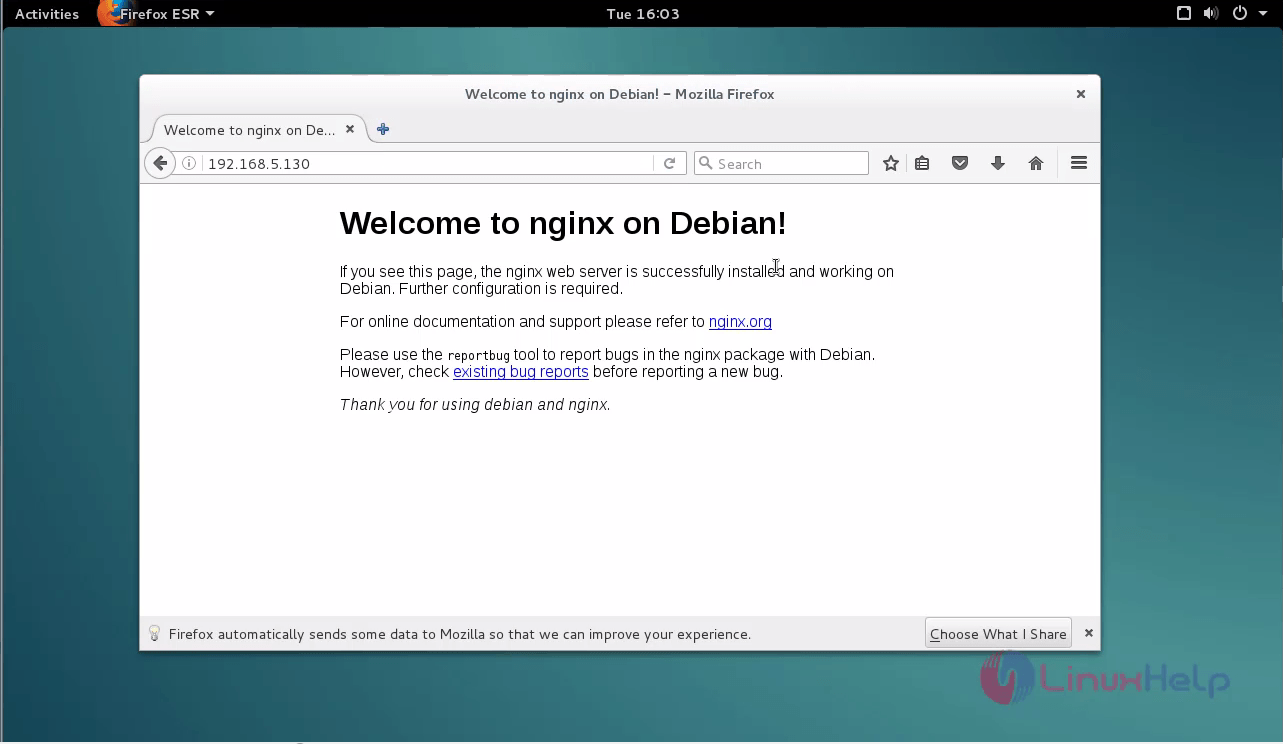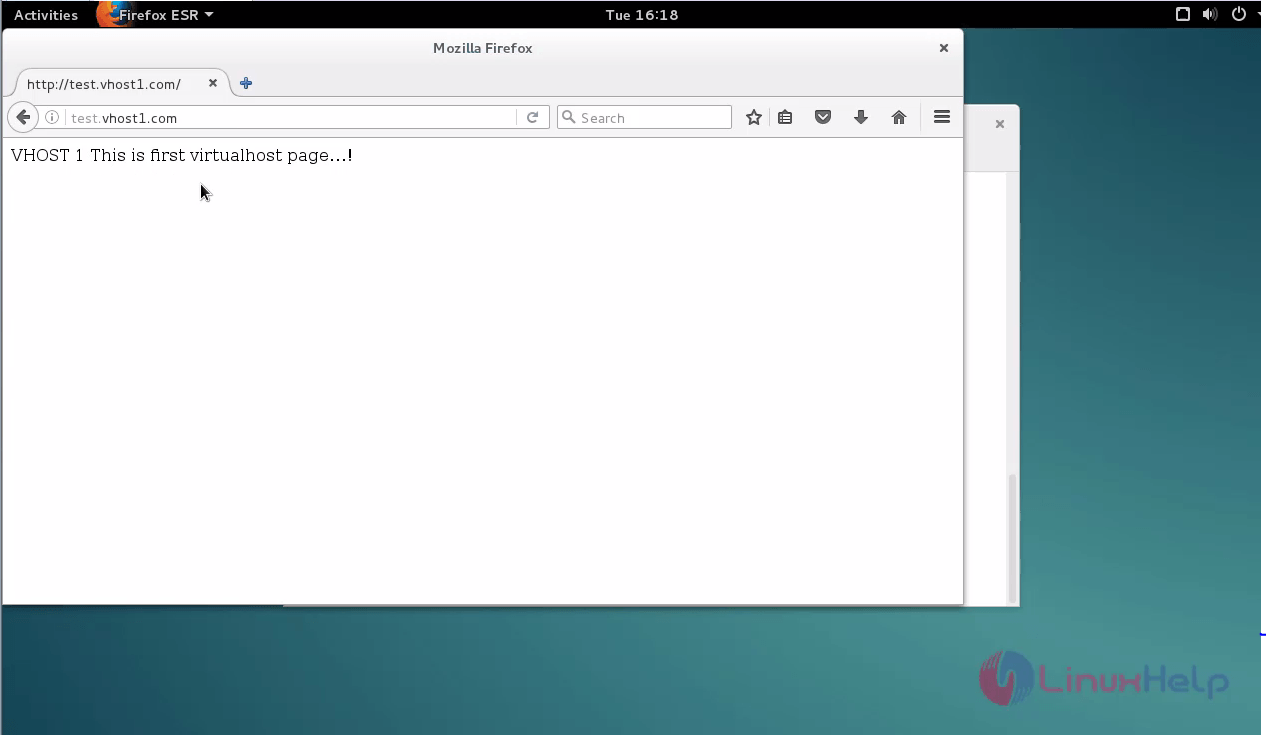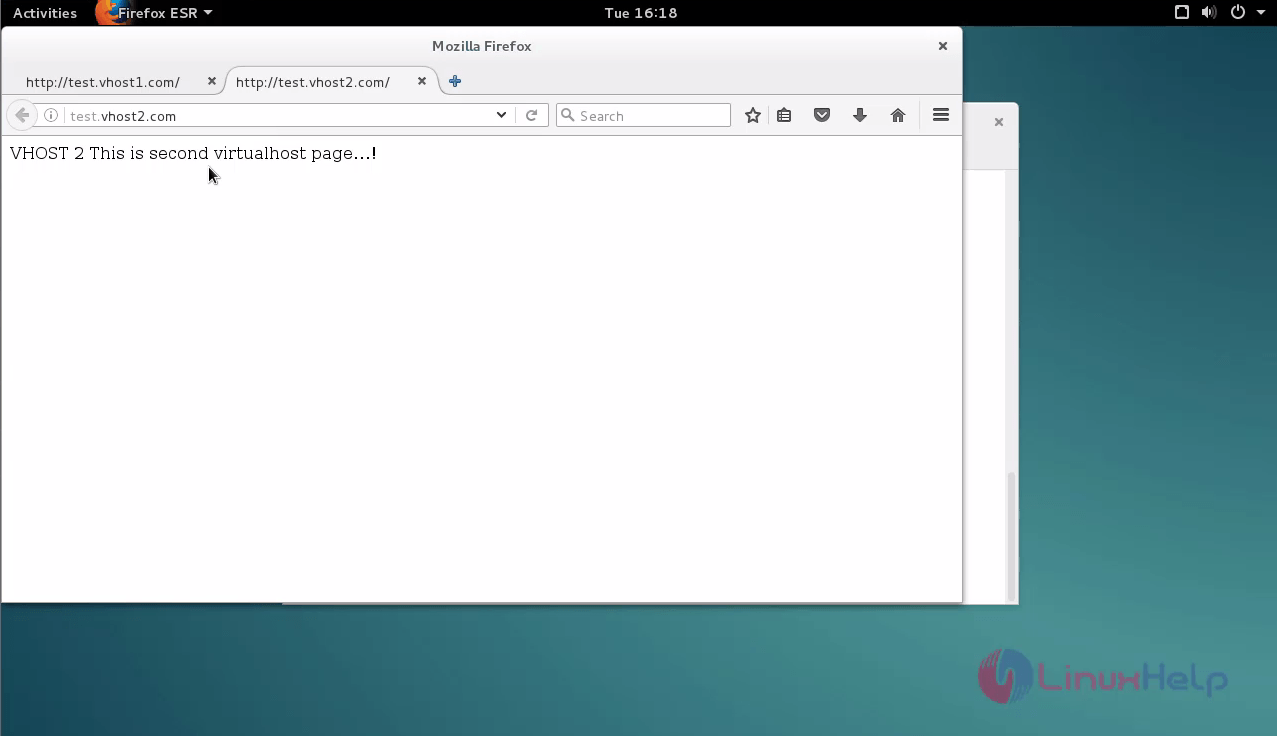How to Install and Configure Nginx Virtual-Host in Debian
To Install Nginx and Configure Virtual-Host in Debian
Virtual hosting is a technique used to run more than one website on a single server. It allows the users to use multiple host names while sharing its resources. This article explains the installation and configuration process of Nginx Virtual-Host in Debian.
Installation of Nginx Virtual-Host
First install Nginx with the ' apt-get install' command.
root@linuxhelp:~# apt-get install nginx
Reading package lists... Done
Building dependency tree
Reading state information... Done
The following extra packages will be installed:
nginx-common nginx-full
Suggested packages:
fcgiwrap nginx-doc
The following NEW packages will be installed:
nginx nginx-common nginx-full
0 upgraded, 3 newly installed, 0 to remove and 0 not upgraded.
Need to get 591 kB of archives.
After this operation, 1,413 kB of additional disk space will be used.
Do you want to continue? [Y/n] y
Get:1 http://security.debian.org/ jessie/updates/main nginx-common all 1.6.2-5+deb8u4 [88.1 kB]
Get:2 http://security.debian.org/ jessie/updates/main nginx-full amd64 1.6.2-5+deb8u4 [430 kB]
Get:3 http://security.debian.org/ jessie/updates/main nginx all 1.6.2-5+deb8u4 [72.6 kB]
Fetched 591 kB in 2s (209 kB/s)
Preconfiguring packages ...
Selecting previously unselected package nginx-common.
(Reading database ... 136779 files and directories currently installed.)
Preparing to unpack .../nginx-common_1.6.2-5+deb8u4_all.deb ...
Unpacking nginx-common (1.6.2-5+deb8u4) ...
Selecting previously unselected package nginx-full.
Preparing to unpack .../nginx-full_1.6.2-5+deb8u4_amd64.deb ...
Unpacking nginx-full (1.6.2-5+deb8u4) ...
Selecting previously unselected package nginx.
Preparing to unpack .../nginx_1.6.2-5+deb8u4_all.deb ...
Unpacking nginx (1.6.2-5+deb8u4) ...
Processing triggers for systemd (215-17+deb8u5) ...
Processing triggers for man-db (2.7.0.2-5) ...
Setting up nginx-common (1.6.2-5+deb8u4) ...
Setting up nginx-full (1.6.2-5+deb8u4) ...
Setting up nginx (1.6.2-5+deb8u4) ...
Processing triggers for systemd (215-17+deb8u5) ...
Utilize the following command to start the Nginx service.
root@linuxhelp:~# service nginx start
Now its time to check the output. Open the web browser with the respective IP address.

To Configure Virtual-Host
Create the directory for virtual-host.
root@linuxhelp:~# mkdir -p /var/www/vhost1.com
root@linuxhelp:~# mkdir -p /var/www/vhost2.com
Then create the html file for the virtual host domains.
root@linuxhelp:~# nano /var/www/vhost1.com/ index.html VHOST 1 This is first virtualhost page...! root@linuxhelp:~# nano /var/www/vhost2.com/ index.html VHOST 2 This is second virtualhost page...!
Open the nginx.conf file and check the ' include /etc/nginx/conf.d/*.conf' line is enable or not. If its not enable, just enable it.
root@linuxhelp:~# nano /etc/nginx/nginx.conf
Then create the ' vhost.conf' file into ' /etc/nginx/conf.d/' directory for virtual host configuration.
root@linuxhelp:~# nano /etc/nginx/conf.d/vhost.conf
#first vhost configuration
server {
listen 80
server_name test.vhost1.com
location / {
root /var/www/vhost1.com
index index.html index.htm
}
}
#second vhost configuration
server {
listen 80
server_name test.vhost2.com
location / {
root /var/www/vhost2.com
index index.html index.htm
}
}
Next add the virtual host domain name with IP into the ' hosts' file
root@linuxhelp:~# nano /etc/hosts
192.168.5.130 test.vhost1.com
192.168.5.130 test.vhost2.com
Restart the Nginx service to take effect.
root@linuxhelp:~# service nginx restart
Once the above process is completed successfully, open the browser with the created domain names to check the output.


Comments ( 0 )
No comments available